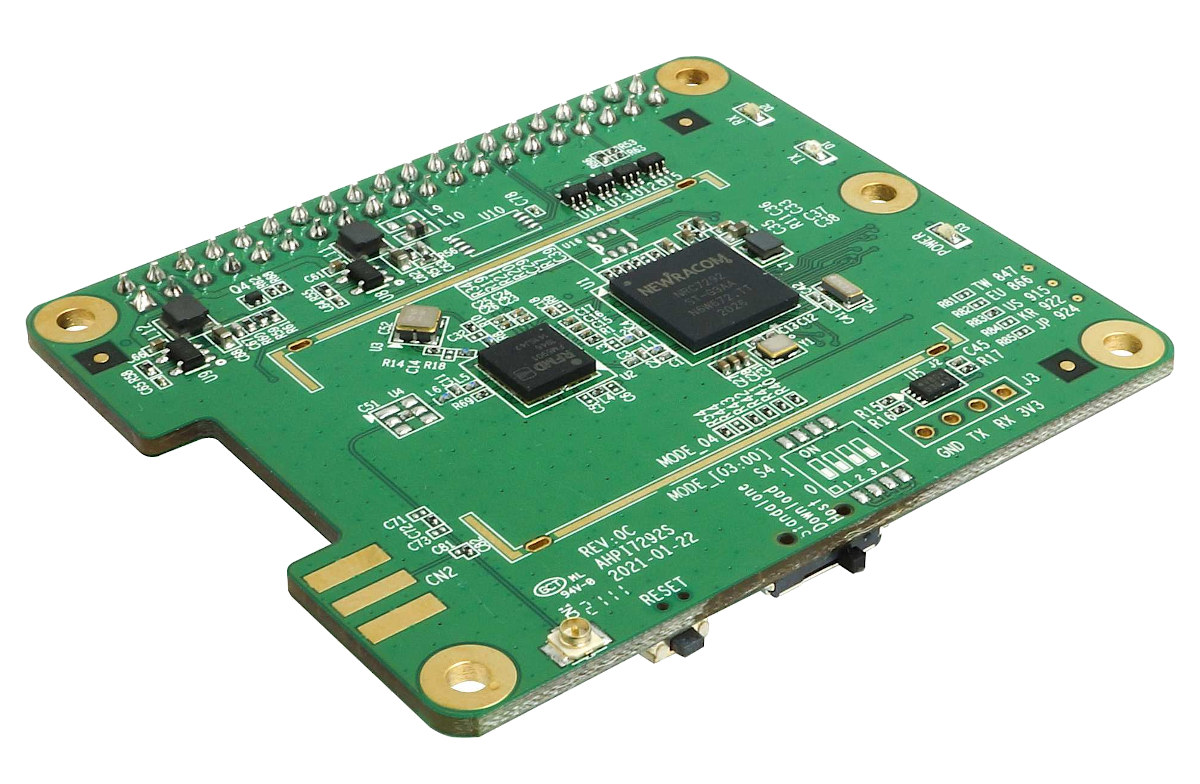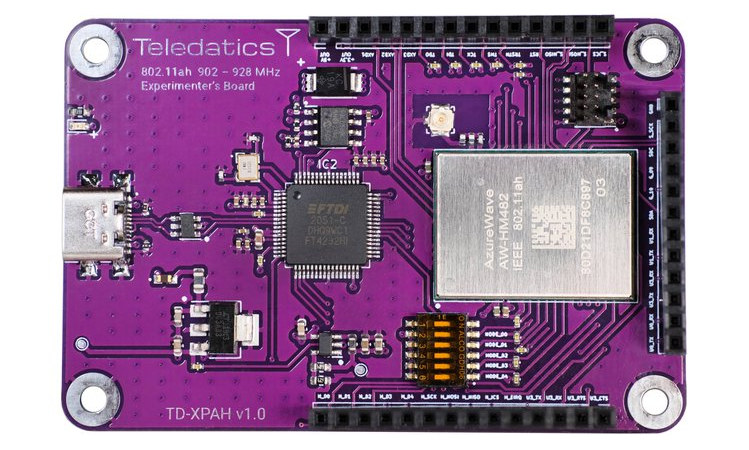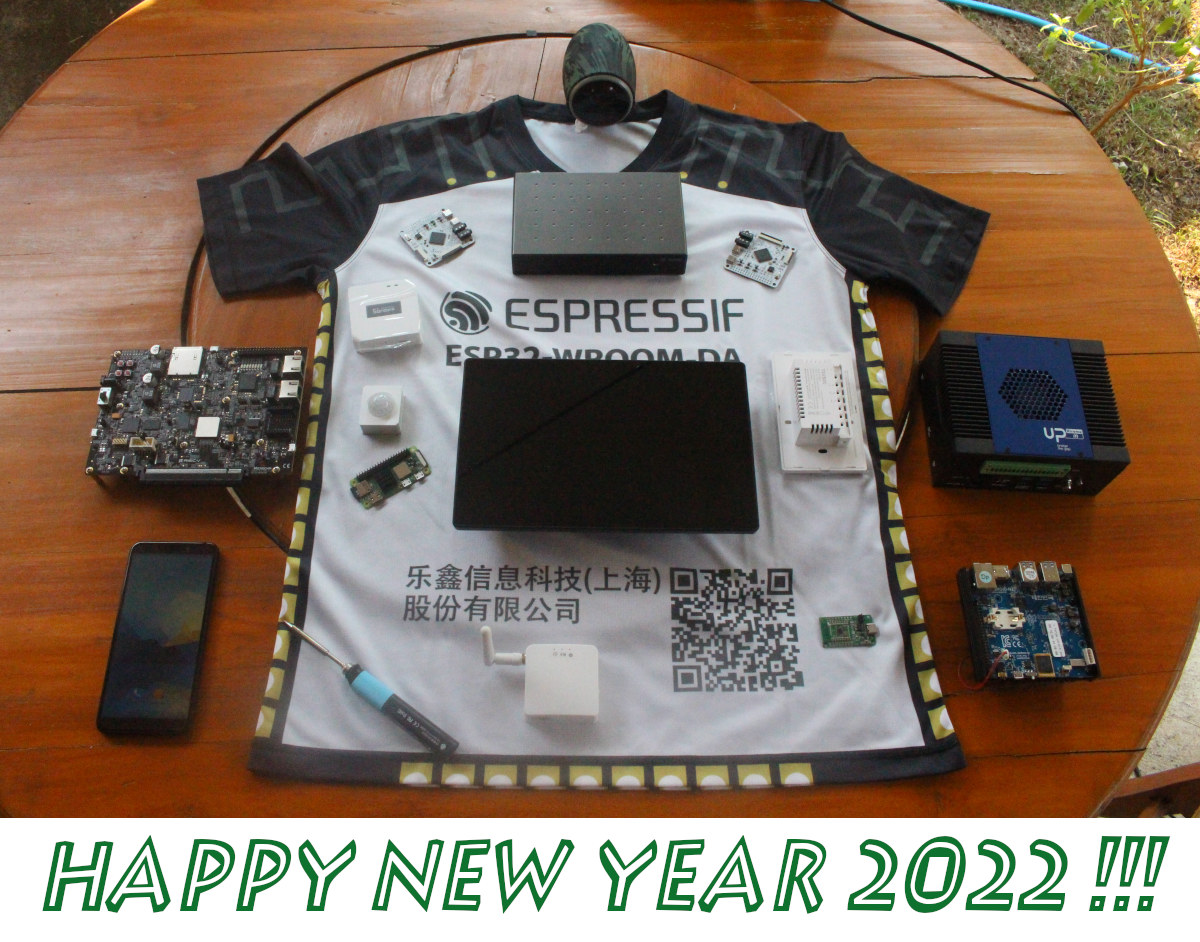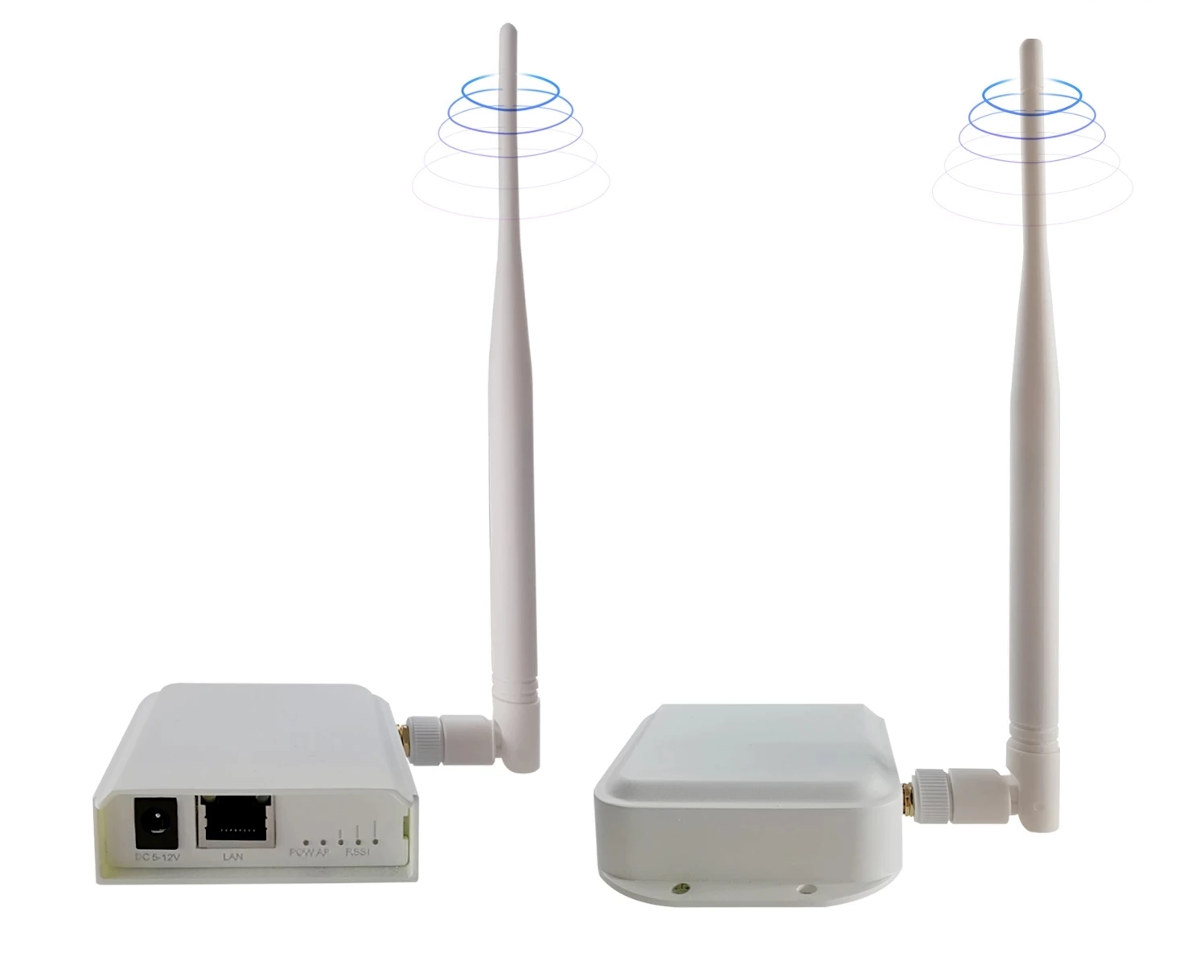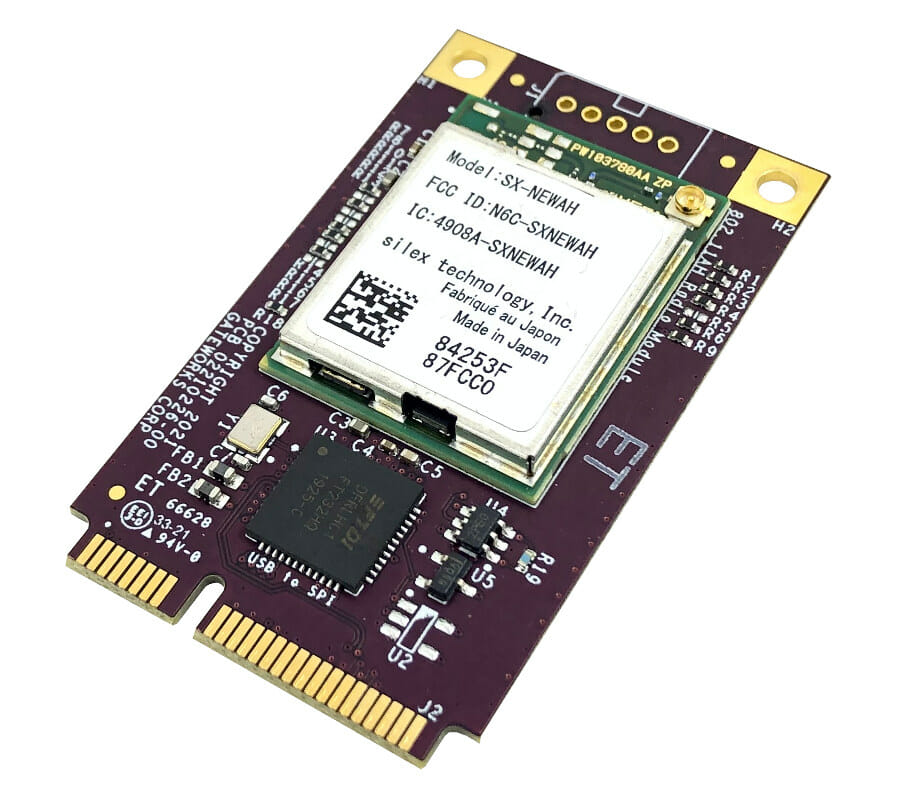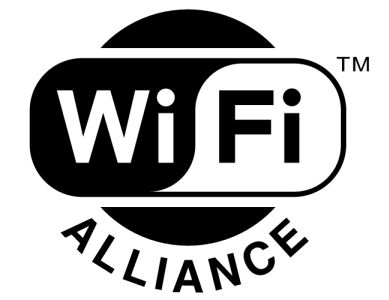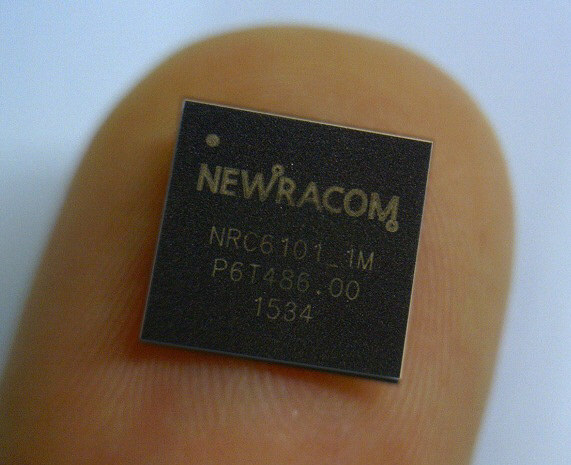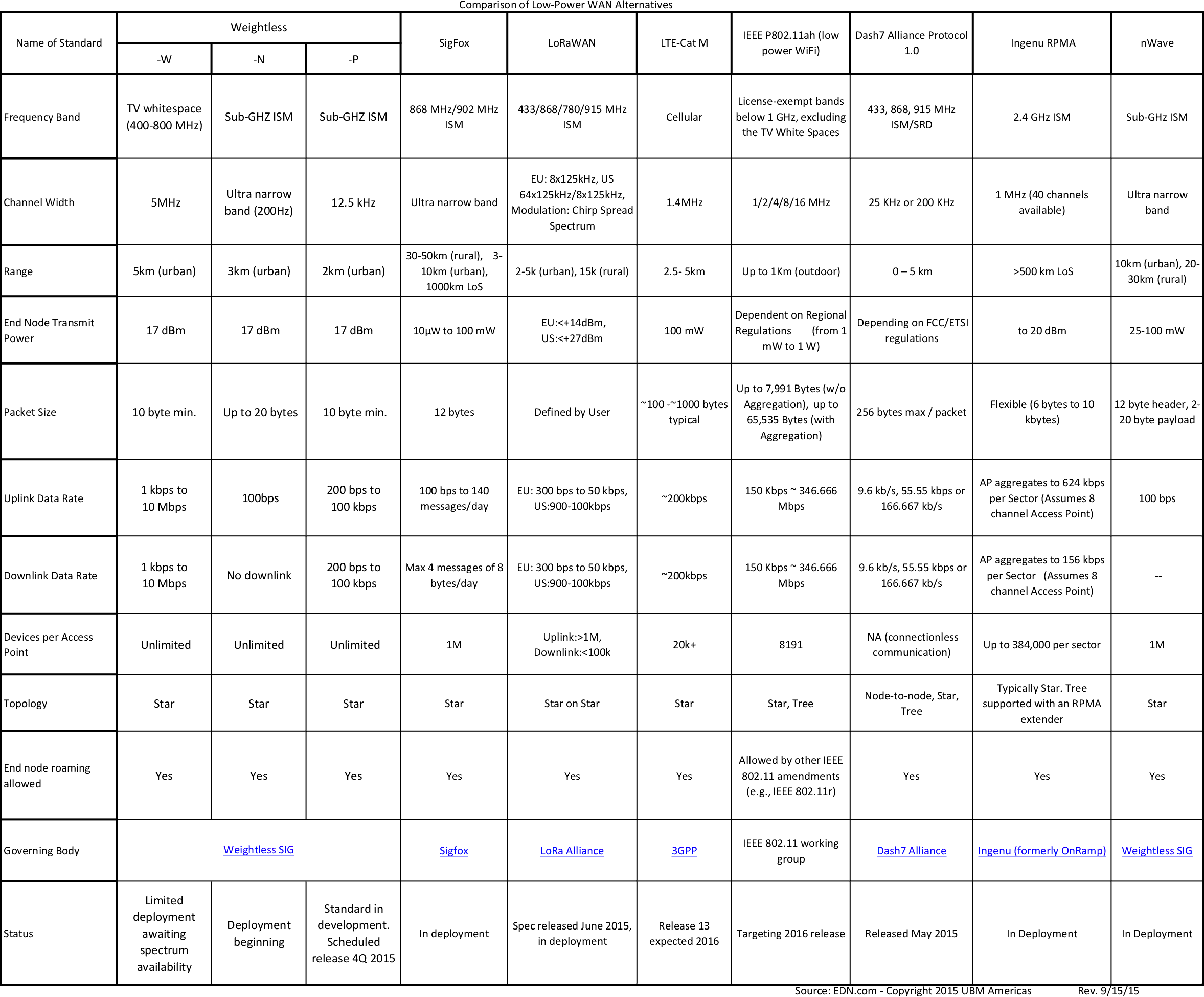ALFA Network AHPI7292S is a Raspberry Pi HAT with WiFi HaLow (802.11ah) offering low power connectivity, up to one kilometer line-of-sight range, and that’s mostly useful for security cameras, but it can also be used to extend the range of the network for other purposes. The Newracom NRC7292 expansion board adds to be few WiFi HaLow hardware we’ve seen in the past year including a mini PCIe card, a WiFi HaLow development board, and a gateway kit to extend the range of IP cameras. ALFA Network AHPI7292S specifications: Chipsets – Newracom NRC7292 WiFi HaLow SoC (IEEE 802.11ah draft 8.0 compliant) RF – Qorvo RFFM6901 front-end Frequencies – 847 MHz (TW), 866 MHz (EU), 915 MHz (US), 922 MHz (KR), 924 MHz (JP) Modulation – OFDM with BPSK, QPSK, 16QAM, 64QAM Data rate – 150 Kbps ~ 15 Mbps Channel bandwidth – 1/2/4 MHz Antenna connector – 1x IPEX/U.FL connector or […]
802.11ah WiFi HaLow development board launched for $99 (Crowdfunding)
When 802.11.ah WiFi operating in the 900 MHz frequency range for low-power long-range communication was announced in 2014, then named WiFi HaLow in 2016, I naively assumed it would soon compete against other LPWAN standards like LoRaWAN or Sigfox. However, over the next few years, we did not see much interest in the wireless standard. But it may be picking up now, as Gateworks recently announced a Newracom NRC7292 based 802.11ah WiFi HaLow Mini PCIe module for their Arm Linux SBC’s, and a company called TELEDATICS has now introduced the Halo TD-XPAH 802.11ah Hallow development board featuring an AzureWave AW-HM482 module. Halo TD-XPAH board specifications: 802.11ah WiFi HaLow connectivity AzureWave AW-HM482 module based on Newracom NRC7292 Cortex-M3/M0 SoC with 752KB RAM, 2MB flash Compliant with IEEE 802.11ah WiFi HaLow operating in 902.0 ~ 928.0 MHz range Up to 15 Mbps data rate Up to at least 1km range, but can […]
Year 2021 in review – Top 10 posts and statistics
As per tradition, we’ll look back at what happened during the year in the last post, and see what 2022 may have in store, plus the usual statistics from CNX Software website. The biggest story of 2021 has to be the worsening of semiconductors shortages with extremely long lead times, prices of some components going up multiple folds, constant complaints on Twitter about availability and prices. I think I even saw a website, hopefully misconfigured, showing an estimated availability of a specific STM32 MCU in 2037. This also gave rise to opportunities and board redesigns, with MotorComm Ethernet chips replacing some Realtek chips in SBCs such as NanoPi R2C and Orange Pi R1S Plus LTS, and CH9102F showing up as a replacement for CP2104 in some IoT boards. We also got some interesting Arm processors, but sadly the high-expected Rockchip RK3588 got delayed by another year, although it’s getting really […]
$65 dual Wi-Fi HaLow gateway kit extends network range by hundreds of meters
I’m starting to better understand what Wi-Fi HaLow (aka 802.11ah) is for, after seeing a kit with two WiFI HaLow gateways used to wirelessly extend the range of Ethernet connected nodes on the LAN, including IP cameras, to several hundred meters, far more than your typical WiFi repeater, but at the cost of a lower bitrate. Yesterday, I wrote about Halo TD-XPAH, the first easily procurable 802.11ah WiFi HaLow development board I had seen, since the introduction of the new standard in 2014. But I was told another lower-cost HaLow board had been available for a few months on Alibaba, and while I failed to find it on Aliexpress, I discovered a pack with two WiFi HaLow to Ethernet gateway that could easily help extend the range of WiFi nodes like security cameras and selling for about $65 shipped. STK-AH9066 WiFi HaLow gateway specifications: Wireless 802.11ah Wi-Fi HaLow standard 902-930MHz […]
Gateworks GW16146 is an 802.11ah WiFi HaLow Mini PCIe module
Gateworks GW16146 is an 802.11ah WiFi HaLow Mini PCIe card designed to provide long-range wireless to IoT applications utilizing the company’s Venice and Newport single board computers. We first noticed 802.11ah WiFI LPWAN standard operating at 900 MHz for the Internet of Things in 2014, followed by Newracom NRC6101 chip in 2015, and the following year the Wi-Fi Alliance decided to call the new standard “Wi-Fi HaLow“. I was expecting it to compete with the likes of LoRa and NB-IoT, but I have not heard much about it, and when I asked a WiFi module and board supplier earlier this year, they seemed surprised I would even be interested in this type of hardware and, obviously, did not have any… So it’s good to see some new hardware coming out. Gateworks GW16146 specifications: 802.11ah Halow connectivity Silex SX-NEWAH 802.11ah Module based on Newracom NRC7292 System-on-Chip (US only) Compliant with IEEE […]
Wi-Fi HaLow is the Consumer Name for 802.11ah Low Power Long Range WiFi
For some reasons, people who decide to name things like to give one name for technical people, and another for consumers. A few years ago, I went to buy a 1080p TV, but at first the seller was confused when I asked, and then I talked about resolution, and when he asked “Full HD” or “HD Ready”? It was my turn to me confused. There are several other example such as Bluetooth Low Energy for geeks may be Bluetooth Smart for consumers, and now the Wi-Fi alliance has just announced that IoT devices and gateway featuring the latest 802.11ah standard will be designed as Wi-Fi HaLow devices. They have not come up with a Wi-Fi Halow logo yet… Nevertheless, apart from the name, nothing appears to have changed. HaLow/802.11ah is still the same Wi-FI standard operating at 900MHz targeting IoT applications with low power, long range (up to 1km), and […]
Newracom NRC6101 802.11ah WiFi SoC Promises up to 1 km Range for Smart Grid and Automation
802.11ah is a new WiFi standard operating in the 900 MHz range that targets low power & long range connectivity, as required by many IoT & M2M applications. According to this low power WAN standards comparison table, 802.11ah also supports up 1km range outdoor, 150 Kbps to 346 Mbps transfer rates, up 8191 clients per access points, and a 2016 launch is planned. However, I had not seen any implementations based on the new standard, except a demonstration by Antcor on a DSP in 2014. A Korean startup, Newracom, may however soon launch the first 802.11ah chip with NRC6101 SoC. I was tipped about this new solution via a Korean website, where I got the picture above from, but there’s no information about NRC6101 on the web, except for a small mention on Wikidevi.com redirecting to the product page, where NRC6101 name is not even mentioned, but with some specifications […]
Comparison Table of Low Power WAN Standards for Industrial Applications
WiFi, Bluetooth and Zigbee are commonly found in consumer devices part of the “IoT ecosystem”, but the range, cost, power consumption, and/or scalability of these wireless standards are not suitable. For example, agricultural and forestry applications normally require long distance, and smart parking or city lighting may requires scalability to a great number of nodes, so alternatives are needed. EDN wrote a thorough article comparing 10 alternative wireless standards: Weightless-W, Weightless-N, Weightless-P, SigFox, LoRaWAN, LTE-Cat M, IEEE P802.11ah, Dash7, Ingenu RPMA, and nWave. The table includes the frequency band, channel width, range, transmit power, packet size (minimal or maximal), downlink and uplink data rates, maximum number of connected devices, topology, roaming capability, and status. If you had to implement something today, four to five solutions are “in deployment”: SigFox, Ingenu RPMA, nWave, LoRa, and possibly Dash7, while the other are only starting to get deployed, or will be finalized in […]


